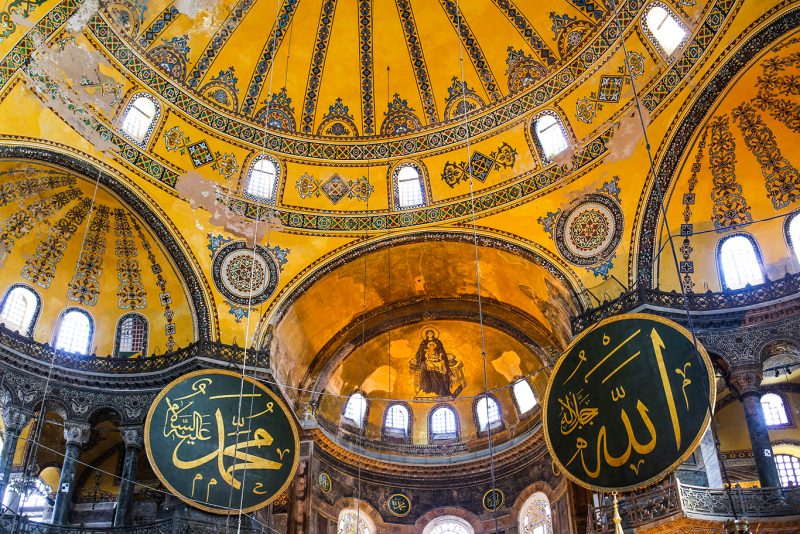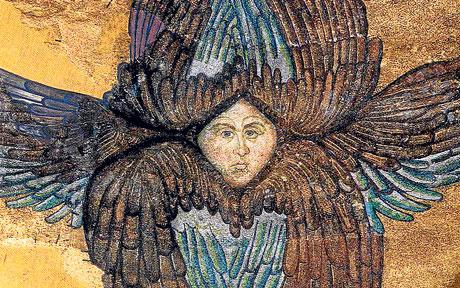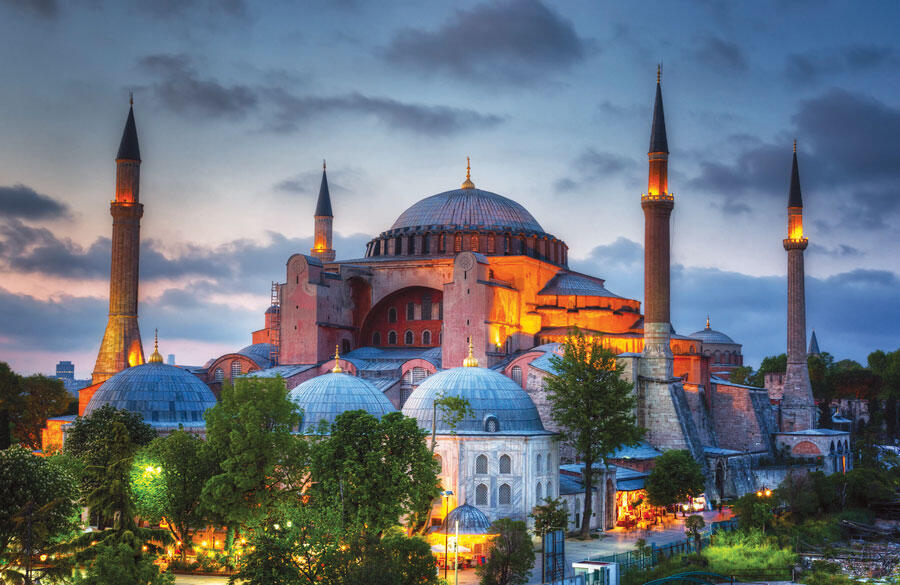Hagia Sophia is great architectural beauty and an important monument both for Byzantine and for Ottoman Empires. Once a church, later a mosque, and now a museum at the Turkish Republic, Hagia Sophia has always been the precious of its time.
Hagia Sophia is located in Istanbul Turkey. It is in the European part of the city in Sultanahmet area (old town), nearby Topkapi palace in Istanbul. It is within walking distance from the hotels in Sultanahmet.

The Hagia Sophia was built in the remarkably short time of about six years, being completed in 537 CE. Unusual for the period in which it was built, the names of the building’s architects—Anthemius of Tralles and Isidorus of Miletus—are well known, as is their familiarity with mechanics and mathematics. The Hagia Sophia combines a longitudinal basilica and a centralized building in a wholly original manner, with a huge 32-meter (105-foot) main dome supported on pendentives and two semidomes, one on either side of the longitudinal axis.

In plan, the building is almost square. There are three aisles separated by columns with galleries above and great marble piers rising up to support the dome. The walls above the galleries and the base of the dome are pierced by windows, which in the glare of daylight obscure the supports and give the impression that the canopy floats on air.
The mystical city Istanbul hosted many civilizations for centuries, of which Byzantium and Ottoman Empires were both the most famous ones. The city today carries the characteristics of these two different cultures and surely Hagia Sophia is a perfect synthesis where one can observe both Ottoman and Byzantium effects under one great dome.
After the Turkish conquest of Constantinople in 1453, Mehmed II had it repurposed as a mosque, with the addition of a wooden minaret (on the exterior, a tower used for the summons to prayer), a great chandelier, a mihrab (niche indicating the direction of Mecca), and a minbar (pulpit). Either he or his son Bayezid II erected the red minaret that stands on the southeast corner of the structure. The original wooden minaret did not survive. Bayezid II erected the narrow white minaret on the northeast side of the mosque. The two identical minarets on the western side were likely commissioned by Selim II or Murad III and built by renowned Ottoman architect Sinan in the 1500s.
In 1934 Turkish Pres. Kemal Atatürk secularized the building, and in 1935 it was made into a museum. Art historians consider the building’s beautiful mosaics to be the main source of knowledge about the state of mosaic art in the time shortly after the end of the Iconoclastic Controversy in the 8th and 9th centuries. The Hagia Sophia is a component of a UNESCO World Heritage site called the Historic Areas of Istanbul (designated 1985), which includes that city’s other major historic buildings and locations.
Hagia Sophia is open to visit every day, except Mondays.
Between 15th April and 1st October it is open from 9am to 7pm with the last entry being at 6pm.
Between 1st October and 15th April it is open from 9am to 5pm with the last entry being at 4pm.
Hagia Sophia is closed on the first days of Ramadan and Eid Ul Adha, which is known as the feast of sacrifice, Festivals for half day.
You may reach Hagia Sophia using Metro or Light Tramlines. The closest tram station is “Sultanahmet station”. When you get off at this station, Hagia Sophia will be only within walking distance. If you go by yourself, try to buy the tickets online so you don’t have to wait on the line many hours. You can ask your hotel to book online tickets for you. If you don’t, you can go and save your place early in the morning before they open. If you come with the cruise you can exit left from the port along the street with the tram lines. It is well worth purchasing a museum pass if you will be visiting more than 4 museums/palaces after Hagia Sophia.
BONUS CONTENT:
160 years old secret Unearthed!

After 160 years of darkness, Seraphim’s face is in daylight.
There are 4 seraphim mosaics ( God’s protector angels with 6 wings) on the 4 pendentives that carry the dome. The 4 seraphims’ faces were covered with 6-7 layers of plaster for almost 160 years during the sovereignty of Ottomans. The last person who saw the faces of the Seraphims was the Swiss architect Gaspare Fossati while he was holding the restoration at Hagia Sophia in 1840s. With a 10 day hard work, experts managed to take off the 7 layers of plasters and reveal the face of one of the seraphims.
The 16 years old scaffold that was standing on the southeast quarter of the dome for reconstruction purposes has been unstitched to be set up to northeast quarter.
The certain age of the mosaics is unclear however they are known to be older than 700 years.

